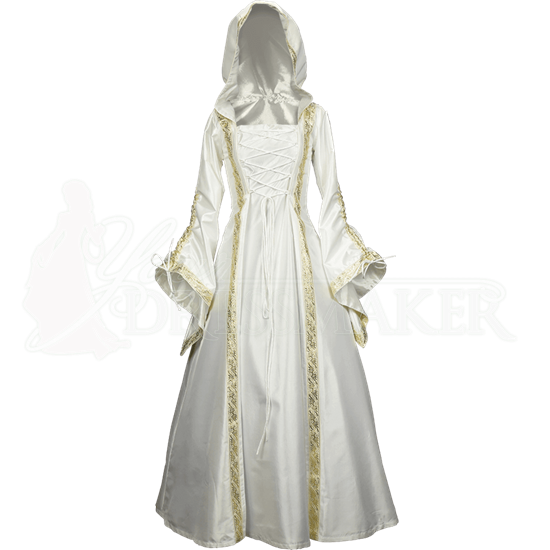
After the gown was put together, I hang it on my doll to let the skirts fall out. I sewed the gown together on the overlock machine, this was one of my best choices ever since the seam both helped with protecting the seam allowance and allowed for some stretchiness in the skirt. This way, there is some small movement allowed over the rib cage, while the front lays flat against the body. You may also note that the front lining pieces have the selvage running along the openings, since the velvet was stretchy, and silk stretch when cut on bias, I laid the pieces out diagonally on the silk fabric to have a non stretchy front, and instead add some flexibility across the body. The two fronts doesn’t have to be similar in pattern, all contemporary art depicts uneven patterns on the front of dresses. I let the two front pieces have the pattern laid out in the same direction, and then turned the back piece upside down, since the skirt would have the pattern visible in the same direction at the back of the gown. With a patterned fabric, you might want to consider where to put your pieces, and in what direction. Since the velvet is transparent where the pattern is, it was not an option to have the seams between the both fabric layers.įront and back pieces of the body being laid out.

I treated the two layers as if they were one when sewing, making the seam allowances visible on the inside of the dress. The fabric being so thin and flimsy, pinning it to the sturdier silk lining was a good help for cutting, basting and sewing. The velvet was very sensitive, so pinning was only an option in seam allowances. Here you can see the silk lining being laid out at the velvet to act as a pattern piece. The bronze buckle and strap end is made after a painting from the period, and can be seen on houppelandes and similar overdresses from the period. The gown closes with a small hook and eye at the waist, and then this belt is added. if using a transparent velvet try out different shades of lining fabric to find the one that gives you the look you want. I opted for the golden coloured silk because it did so well under the velvet, and made the velvet shine even more.


The gown is fully lined with silk dupioni for support and look, and has linings in black silk taffeta and on the bottom, the same black high quality wool as in my love’s joined hose. The fabric is a silk velvet, sensitive, very thin and extremely flimsy I so understand why silk velvet has been replaced by synthetic alternatives on the market (and it is not just a matter of price). This was one of the most difficult garments I have ever made. This can be seen in paintings, though a closed gown would have been more common. The gown is open at the front to allow for easy undressing, and to show more of the white dress underneath. This is the final layer I made for my wedding outfit, it is a silk velvet dress inspired by the late 15th century over dresses.


 0 kommentar(er)
0 kommentar(er)
